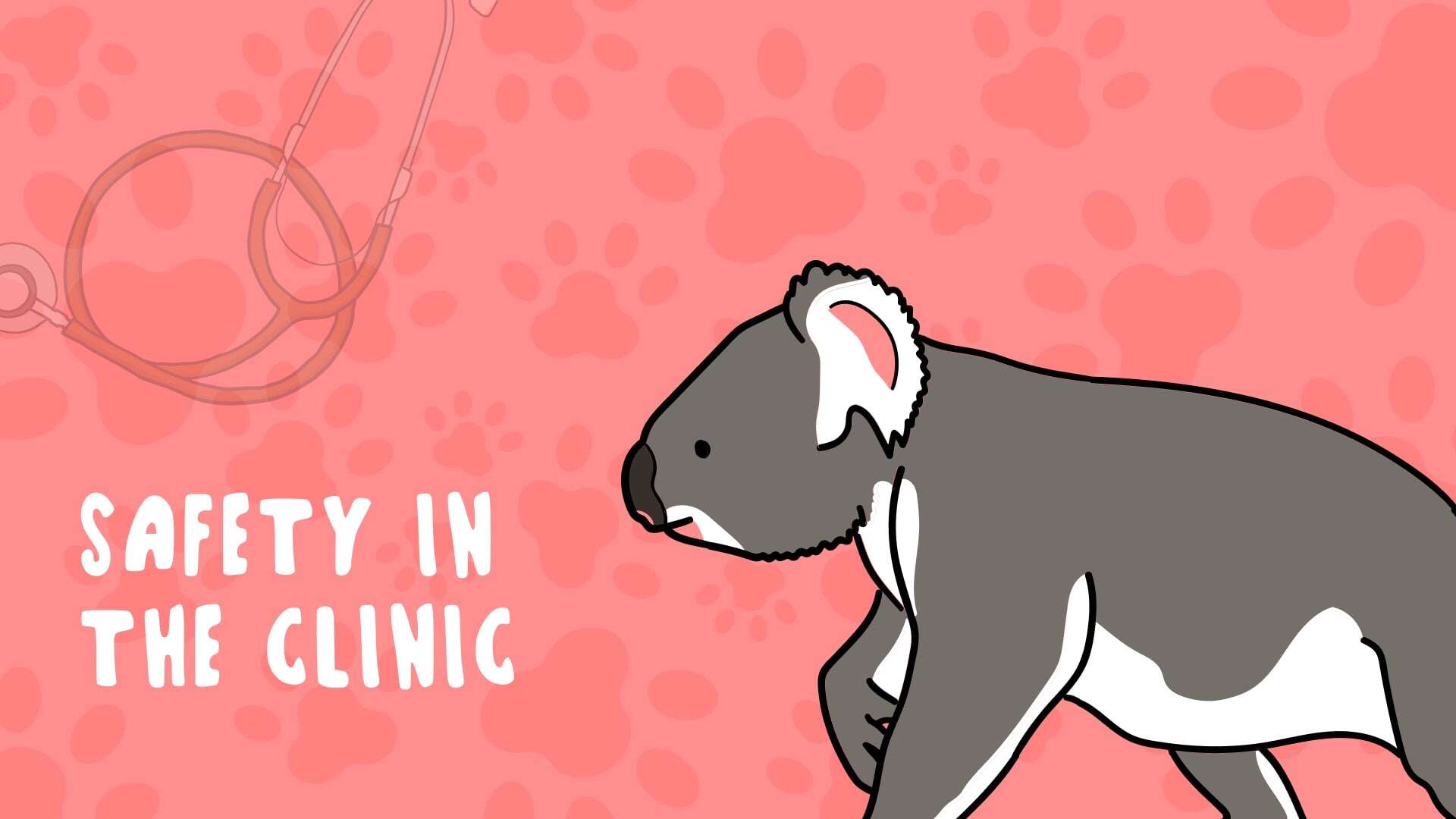Infection Control and Hygiene in Veterinary Clinics

In veterinary clinics, maintaining a sterile and hygienic environment is crucial for the well-being of animals, veterinary staff, and even the pet owners who visit. Infection control in veterinary settings is about more than just keeping surfaces clean—it’s an essential aspect of ensuring that diseases, particularly those that can be transmitted between animals and humans, are prevented. With the number of different pathogens that can be spread in such an environment, the role of effective infection control and hygiene practices cannot be overstated. In this blog, we’ll explore the importance of infection control in veterinary clinics, the best hygiene practices, and how they help create a safe environment for animals and people alike.
Understanding Infection Control in Veterinary Clinics
What Is Infection Control?
Infection control in veterinary clinics refers to a series of procedures and practices designed to prevent the spread of infectious diseases among animals and humans. The goal is to reduce the risk of cross-contamination, whether through direct contact with infected animals, contaminated equipment, or environmental exposure. Proper infection control involves a combination of cleaning, sterilisation, and isolation measures that ensure both animals and humans are protected from harmful pathogens.
In veterinary clinics, infection control is particularly important because animals can carry zoonotic diseases—those that can be transmitted from animals to humans. Moreover, many animals visit the clinic with contagious conditions, and without stringent infection control measures, these illnesses could spread among other animals in the clinic. By ensuring high standards of infection control, veterinary professionals can protect both animals and humans from these risks.
Common Infections in Veterinary Clinics
Veterinary clinics are prone to several types of infections, each with varying degrees of severity. These can be bacterial, viral, fungal, or parasitic in nature. Examples include:
- Bacterial Infections: These are often caused by direct contact with bodily fluids or infected surfaces. Common bacterial infections in animals include those affecting the skin, urinary tract, and respiratory systems.
- Viral Infections: Viruses like parvovirus in dogs, calicivirus in cats, and feline immunodeficiency virus (FIV) can be highly contagious and spread quickly in environments with high animal traffic.
- Fungal Infections: Fungi such as ringworm can infect the skin and are contagious to both animals and humans. These are particularly concerning in environments where animals are housed in close quarters.
- Parasitic Infections: Parasites like fleas, ticks, and worms can also spread within veterinary clinics, affecting both pets and their owners.
Preventing the spread of these infections requires regular hygiene practices, sterilisation, and a proactive approach to identifying animals with contagious diseases upon arrival.
Key Hygiene Practices in Veterinary Clinics

Hand Hygiene and Personal Protective Equipment (PPE)
Hand hygiene is one of the most important elements of infection control in any healthcare setting, and veterinary clinics are no exception. Proper handwashing can prevent the spread of germs and reduce the risk of cross-contamination. The six-step handwashing process involves thoroughly washing hands with soap and water, ensuring that all parts of the hands—including the wrists, between the fingers, and under the nails—are properly cleaned.
In addition to hand hygiene, Personal Protective Equipment (PPE) is essential in maintaining hygiene standards. PPE includes gloves, gowns, masks, face shields, and footwear, and it acts as a barrier between infectious materials and the veterinary staff. PPE is particularly crucial when handling animals with infectious diseases or when performing invasive procedures such as surgeries. Understanding when and how to use PPE can greatly reduce the risk of spreading infections in the clinic.
Cleaning and Disinfection Procedures
The process of cleaning, disinfecting, and sterilising surfaces and equipment is central to infection control. Cleaning involves the removal of visible dirt and debris using soap and water. Disinfection goes a step further by using chemicals to kill or inactivate harmful pathogens. Sterilisation involves the complete eradication of all microorganisms, which is especially important for surgical instruments and any equipment that will come into direct contact with the animal's internal systems.
It is important to have specific protocols for cleaning different areas of the clinic. For example, high-risk areas, such as examination tables, surgical rooms, and kennels, should be cleaned and disinfected after each use. In addition to surfaces, disinfecting the air is also critical in preventing airborne pathogens from spreading. Proper ventilation systems and air purifiers can help maintain clean air quality within the clinic.
Sterilisation of Equipment
Sterilisation is particularly critical in veterinary clinics to ensure that medical tools and instruments do not spread infections between animals. Tools such as scalpels, surgical scissors, and forceps should be sterilised using methods like autoclaving (high-temperature steam) or chemical sterilisation.
Before sterilising, it’s essential to thoroughly clean the equipment to remove any organic material. Sterilisation should be performed after every use, particularly when the equipment has been in contact with infectious fluids. Failure to properly sterilise equipment can result in the transmission of bacteria, viruses, and parasites, putting both animals and staff at risk.
Infection Control in Animal Care
.jpg?width=800&height=450&name=thumb%20(6).jpg)
Animal Hygiene and Health
Maintaining animal hygiene is just as important as maintaining clinic hygiene. This involves ensuring that animals are bathed, groomed, and cared for to reduce the spread of infections. For example, pets with skin infections should be washed with appropriate medicated shampoos, and animals suffering from parasites should be treated promptly.
Regular veterinary check-ups, including vaccination schedules, can also help prevent the spread of infectious diseases. Vaccinations protect animals from diseases like rabies, distemper, and feline leukemia, reducing the likelihood that they will become infected while in the clinic.
Isolation Procedures
One of the most effective infection control strategies is isolating animals that show signs of contagious diseases. Isolation procedures ensure that infected animals do not come into contact with healthy animals, preventing cross-contamination. Clinics should have designated isolation wards for animals with suspected infections.
Veterinary professionals should be equipped with PPE when interacting with isolated animals and ensure that any equipment used is sterilised or disposed of to prevent further spread. Effective isolation practices are key to limiting outbreaks within a clinic.
Environmental Hygiene in Veterinary Clinics
Clinic Layout and Infection Control
The design of a veterinary clinic can play a significant role in infection control. For instance, clinics should have designated areas for different types of animals (e.g., separate waiting areas for dogs and cats) and specific rooms for surgeries, examinations, and isolation. This separation limits the chance of cross-contamination.
Clinic floors, walls, and ventilation systems should be maintained regularly. Regular cleaning of floors with appropriate disinfectants is necessary to prevent the accumulation of dirt and germs. Air quality is another important factor. Veterinary clinics should maintain adequate ventilation to reduce the presence of airborne pathogens, especially in areas with high foot traffic.
Waste Disposal and Biosecurity
It is essential that clinical and related wastes are properly segregated, packaged, labelled, handled and transported to minimise risk to waste handlers and community, such as needle stick injuries and transmission of infectious diseases. All sharps and other waste containers should meet the specific Australian Standards requirements. Clinical and related waste must be segregated and identified by colour coding and marked accordingly. - Environmental Protection Agency
In any veterinary clinic, waste disposal and biosecurity measures are critical for infection control. This includes the proper disposal of animal waste, sharps (such as needles and scalpels), and any contaminated materials. Clinical waste must be segregated into specific bins and disposed of according to local regulations.
Biosecurity measures also ensure that diseases are not spread through the environment. Veterinary staff should follow strict protocols when handling and disposing of waste materials to reduce the risk of disease transmission.

Training and Compliance in Infection Control
Staff Training and Education
Training staff on the importance of infection control and hygiene practices is essential for maintaining a safe and sterile environment. Continuous education on the latest infection control techniques and protocols will ensure that staff members are always up to date and prepared to handle any potential risks. Regular training sessions and refresher courses are necessary to maintain high standards.
Regulations and Standards
Veterinary clinics must comply with national and international infection control standards. These regulations set the benchmark for cleaning, sterilisation, and waste disposal practices. Adhering to these guidelines not only ensures the safety of animals and staff but also protects the clinic from potential legal and financial consequences.
The Future of Infection Control in Veterinary Clinics
Emerging Challenges and Innovations
As veterinary medicine evolves, new challenges arise in infection control, particularly with emerging zoonotic diseases and antibiotic-resistant infections. Veterinary clinics will need to adopt innovative technologies and practices to address these evolving threats. For example, robotic cleaning systems and advanced sterilisation technologies may help reduce the risk of human error and improve efficiency.
Ensuring a Safe and Healthy Environment in Veterinary Clinics
Maintaining infection control and hygiene in veterinary clinics is essential for the safety of both animals and humans. Proper hand hygiene, cleaning, sterilisation, and isolation procedures form the foundation of infection control, helping to prevent the spread of harmful pathogens. By staying up to date with the latest protocols and technologies, veterinary professionals can ensure that their clinics remain safe, clean, and effective in treating all animals.
Are you interested in learning more about infection control in veterinary settings? Consider enrolling in our Animal Health & Veterinary Care course today and start your journey toward becoming an expert in animal care. Whether you're a pet owner or aiming for a career in veterinary services, this course will equip you with the knowledge and practical skills to care for animals in a variety of settings.

%20is%20a%20powerful%20example%20of%20visual%20storytelling.jpg)